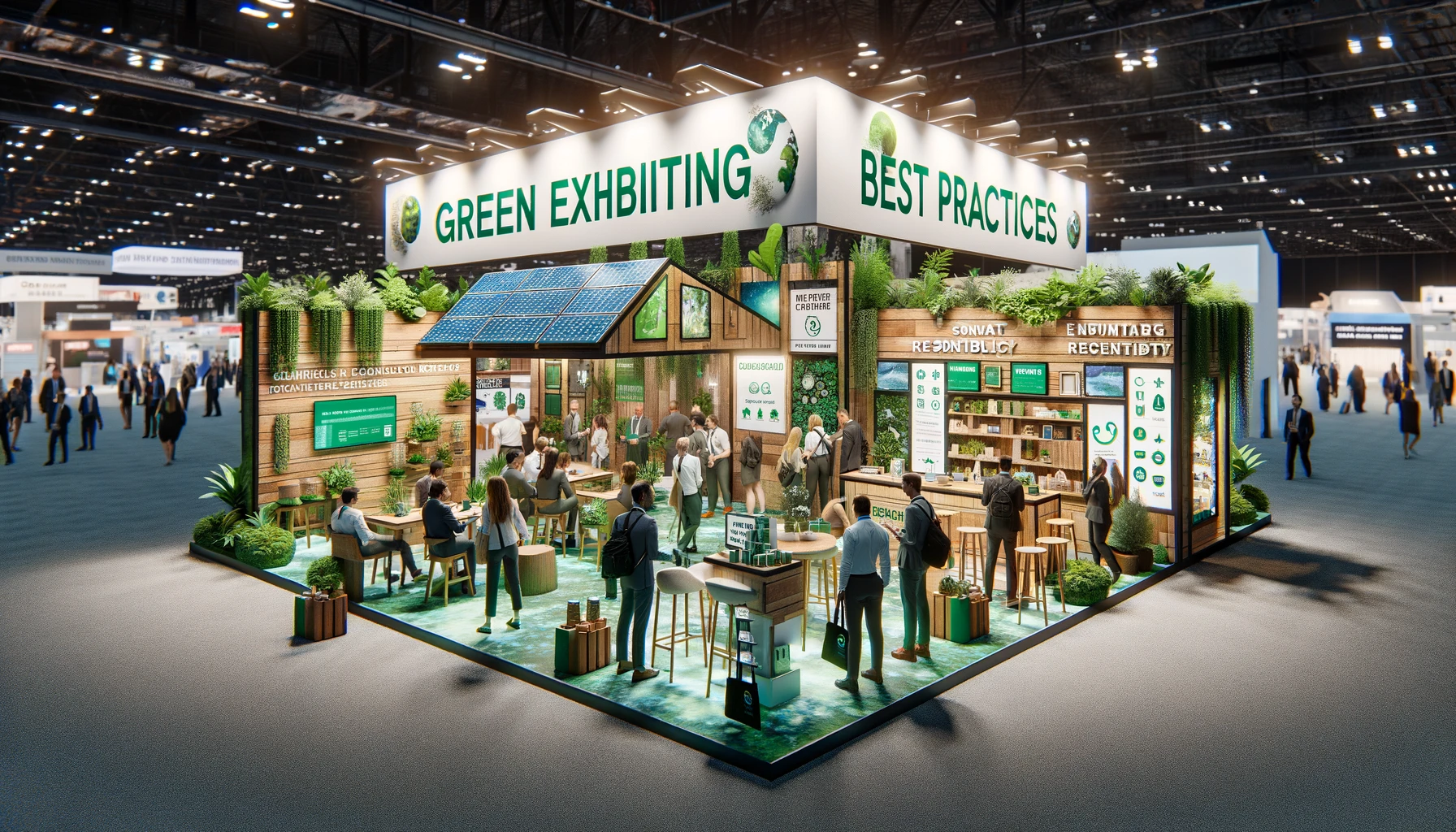
After nearly a year spent battling the coronavirus, better therapeutics are now available and a vaccine roll-out is expected during the first half of 2021 and beyond. As live event bans ease and vaccinations become widespread, some event marketers may face resistance from management about the need to return to live events. Here’s how to make your case.
Start planning now
Depending on when you read this, large face-to-face events and gatherings may still be banned in parts of the US and overseas. That being said, many event organizers have rescheduled events for later in 2021. Make a list of your top producing events from years past along with ROI data (leads generated, sales, etc.), and monitor the status of rescheduled events you’d like to exhibit at in 2021.
Some associations and event organizers have also transitioned to smaller, regional events during the pandemic. Seek out new exhibiting opportunities at smaller shows that offer high-quality engagements in a safe, socially-distanced environment. For example, more event organizers plan to offer hosted buyer programs (buyers incentivized to attend) and matchmaking activities (via AI software), that help connect exhibitors with the right decision-makers.
Develop a strategy to optimize events with fewer attendees
Many companies say they won’t allow corporate travel or exhibit at large trade shows and live events until a vaccine becomes widely available. If you hope to exhibit in the meantime, you’ll need to convince management that it’s worth investing in events with fewer attendees. Your objective here is to go for quality leads over quantity. Consider the following options:
- Prioritize events with hosted buyer programs, where event organizers compensate high-quality decision makers to attend their shows (they pay for lodging, travel, meals, VIP experiences, etc.), and also consider events with matchmaking activities.
- Incentivize your top prospects to meet with you at events. For example, you could develop a strategic marketing campaign targeting top prospects, where you encourage them to schedule time to meet with you in exchange for a VIP gift or experience.
- Go hybrid! Some of the prospects and clients you desperately want to see, will stay away from face-to-face events well into 2021. That means you’ll need to reach them digitally (or dare we say … virtually). Leverage the content you create for and at the live event, by sharing it online via social media, email updates and your website. You can invite virtual attendees to watch live product demos, big announcements and panel discussions LIVE from your booth. Consider doing a giveaway or offer a whitepaper or ebook download in exchange for email addresses of virtual guests.
Prior to each event, ask your sales team to reach out to prospects and clients to get a feel for who will attend in person. Providing management with a list of names of highly-desirable, buyer-attendees can go a long way toward getting buy-in for returning to live events.
Establish the value of live events (lead and revenue numbers speak volumes)
If you’ve been tracking the ROI of your live events program, this step should be a cinch. Prepare a spreadsheet that compares results (KPIs, leads, sales, etc.) over the past few years, then compare those numbers to 2020. Have leads and revenue dropped significantly since face-to-face events halted? If so, that’s a clear indication that returning to live events should be a priority, as soon as it’s safe.
Live events also provide invaluable opportunities for companies to keep their brands front and center. This is especially true for B2B organizations that rely heavily on trade shows to get in front of customers, cultivate leads and establish brand presence.
In addition, sharing the following benefits of exhibiting—sooner rather than later—should help support your case:
- Motivated buyers: The attendees that choose to travel to these events will likely be the most motivated buyers—not the boondogglers that waste your booth staffs’ time. This means the likely conversion per interaction may be higher.
- Less competition: There will be a big opportunity to stand out in the crowd because there will likely be fewer exhibitors (AKA competitors) at shows in the near future. You could end up having more meaningful conversations with decision makers because they won’t be pulled in as many directions as they would be under “normal” circumstances.
- Heightened brand awareness and ROI BEYOND the show: Since fewer exhibitors will be crowding the show floor, shows in the first half of 2021 will provide a HUGE opportunity for lesser known brands to become “known.” As digital influencer Larry Kim rexplains, this is important because:
- People are much more likely to buy from brands they know.
- They are also more likely to click on digital ads from brands they know.
- Repeat visitors to your website (people who KNOW your brand) are 2x-3x more likely to convert into paying customers than new visitors. WOW!
When you meet with management, it’s also a good idea to bring along some reinforcements—your sales team—to further bolster the value of trade shows. If anyone knows the importance of live events, salespeople do, especially your top sales reps. They know the value of face-to-face interactions and how networking at live events and trade shows helps build and solidify relationships with prospects and clients.
Have you struggled to calculate the ROI of your live event or trade show program? Please contact us. We can walk you through the numbers and offer a variety of tools and resources to simplify the process.
Do your research on safety and social distancing protocols
If you want to convince management to return to live events, you’ll need to demonstrate that it’s safe to do so. Event organizers, convention centers and other live event venues know safety is important to event attendees and exhibitors, and most will be more than willing to share their safety and social distancing protocols with you.
Since events vary, you can also expect experienced event organizers and venues to work closely together to develop protocols that work specifically for their unique events. You should be able to find this information on venue and event websites or social media (if not, email or call). In general, here are a few things to look for:
- GBAC STARTM accreditation. When the pandemic took hold, the International Sanitary Supply Association (ISSA) developed the Global Biorisk Advisory Council® (GBAC) STAR Facility Program. The program provides criteria for cleaning, disinfecting and infectious disease prevention and requires venues to put a plan in place to control infectious risks (COVID-19, influenza, MRSA and TB) in order to receive accreditation. You may also ask how often the facility sanitizes rooms (between sessions, twice a day, daily, etc.).
- Social distancing and masking policies. Most venues follow the guidance of the Centers for Disease Control and Prevention (CDC), as well as state and local requirements but it’s important to check before you commit to a show. If your team will be attending open sessions and meetings, ask if seating will be set up to accommodate social distancing. You could also ask how policies will be enforced and if educational social distancing signage and floor decals will be used.
- Temperature screening. Find out if the venue and event organizer require a temperature check prior to entry and how your team will know if an attendee has been checked. For example, some venues issue new wrist bands to attendees each day.
- Use of plexiglass barriers. Does the facility use plexiglass barriers in high-traffic, face-to-face spaces, like registration areas and concessions? Barriers help mitigate the spread of disease and bring peace of mind.
Organize all information into a detailed presentation and GO!
Once you’ve gathered all of the relevant data, it’s time to put the information into a detailed, written report and present it to management. By showing the value of live events, a clear step-by-step strategy to cultivate high-value leads and how you’ll be able to keep employees safe, you’ll be one giant leap closer to the trade show floor.

If you have questions or need support along the way, The Trade Group is here to help! Feel free to contact us at 800-343-2005.



